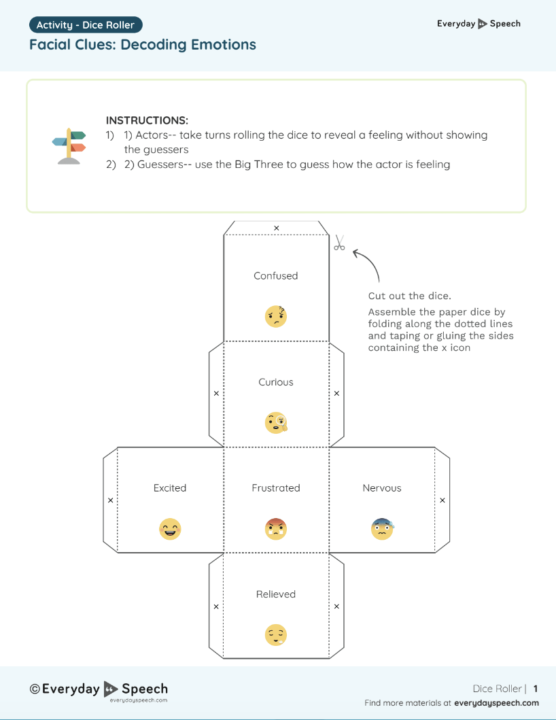
For some middle school students, understanding and responding to emotions can be particularly challenging. Special educators have the unique opportunity to guide these students in mastering these essential skills using targeted tools and strategies. This blog explores teaching emotional recognition to middle schoolers through engaging video lessons and interactive activities, specifically focusing on using the Big Three for identifying emotions.
Teaching Emotional Recognition to Middle Schoolers
Emotional recognition is a key component of emotional intelligence, which involves understanding one’s own emotions and the emotions of others. For middle schoolers, who are at a critical developmental stage, honing these skills can greatly impact their social interactions and self-awareness. By mastering emotional recognition, students can improve their communication skills, build stronger relationships, and navigate social situations more effectively.
Introducing “Using the Big Three”
“Using the Big Three” refers to a strategic approach to emotional recognition, focusing on three primary aspects: eyes, eyebrows, and mouth. This method provides a clear framework for students to decipher others’ emotions accurately, which is especially beneficial in a classroom setting where interactions can be fast-paced.
Animated Video Lesson: “Using the Big Three”
The journey into emotional recognition begins with the animated video “Using the Big Three.” This lesson breaks down the steps to successfully notice and understand how someone else is feeling by observing their eyes, eyebrows, and mouth . The animation makes it accessible and engaging, particularly helpful for visual learners. By simplifying the concepts into manageable parts, this video ensures that students can grasp and apply the techniques in real-life scenarios.

Live-Action Video Modeling: “Responding to Others’ Feelings”
Following the foundational knowledge from the animated video, the live-action video modeling lesson “Responding to Others’ Feelings” takes learning a step further. This video demonstrates how knowing someone’s feelings can help determine what to say or do in response. Real-life scenarios featuring student actors make the abstract concept of emotional intelligence concrete and relatable. This lesson emphasizes practical application, showing students how to use their emotional recognition skills to interact appropriately and empathetically.

Interactive Learning with “Facial Clues – Decoding Emotions” Dice Roller
To reinforce learning and add an element of fun, the Facial Clues – Decoding Emotions printable PDF dice roller material is an excellent tool. This activity involves dice with different emoji faces representing various emotions. Students roll the dice, act out the emotion, and then group members use the “Big Three” to identify and discuss the emotions displayed. This interactive exercise not only enhances their understanding of facial expressions but also encourages participation and discussion among peers.

Unlock Emotional Recognition materials by signing up for your free trial today – no credit card required!
Get more Big Three materials here!
Instant access to thousands of no-prep social skills activities, over 1000+ video lessons, and engaging games designed to enhance learning and development.
Conclusion
Teaching emotional recognition is a vital part of developing emotional intelligence among middle schoolers, particularly those in special education. By utilizing engaging tools like the video lessons and dice roller, educators can provide a comprehensive, interactive learning experience. These resources not only teach students how to identify and respond to emotions but also equip them with the skills necessary for personal growth and social interaction. Through consistent practice and supportive teaching, students can navigate the emotional complexities of middle school with greater ease and confidence.
Sample Video
Students learn best from watching real students their own age model skills. Try out this sample video lesson. We offer our entire Social-Emotional Learning platform free for 14 days here!
Related Blog Posts:
Developing Focus and Organization: Free Executive Functioning Worksheets
Exploring the Benefits of Incorporating Executive Functioning Curriculum in High School Education
Building Skills: A Practical Approach to Executive Functioning Curriculum










